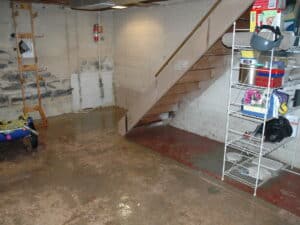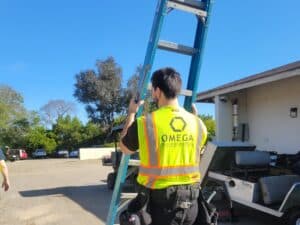Four Key Changes to the OSHA Beryllium Standard

With both long and short-term exposure limits reduced under new Occupational Safety and Health Administration (OSHA) standards, practice controls and plans for those who work with beryllium-containing products may need updating in order to ensure worker safety and OSHA compliance.
A lightweight but extremely strong metal, beryllium and its related compounds are often found in construction materials as insulation for electric wiring and in products made of ceramic or copper. As an insulation material, beryllium has come to replace polychlorinated biphenyls (PCBs) as the material of choice because it is deemed less harmful to human health and the environment, but it is still highly toxic.
When inhaled, beryllium can cause lung damage and lead to diseases such as pneumonia, lung cancer and chronic beryllium disease (CBD). CBD is a life-threatening pulmonary disease that workers can develop following exposure to beryllium at levels below permissible exposure limits. Workers can also be at risk from skin exposure to airborne beryllium or materials that contain beryllium.
New OSHA Beryllium Standard Designed to Save Lives
In December 2018, OSHA began enforcing its stricter standards for beryllium exposure in industrial settings, including construction. The new standards, which reduce both long-term and short-term exposure limits, are expected to prevent as many as 90 deaths from beryllium-related diseases, including lung cancer, and prevent 46 new cases of chronic beryllium disease (CBD) each year.
So what do property managers and other construction stakeholders need to know about OSHA’s new beryllium standard? Here are four key takeaways.
1. Long-Term Exposure Limits Have Decreased
OSHA’s new rule “reduces the permissible exposure limit (PEL) for beryllium to 0.2 micrograms per cubic meter of air, averaged over 8-hours.” Employers must use engineering and work practice controls to prevent beryllium from becoming airborne where workers can breathe it in.”
2. Short-term Exposure Limits Have Also Decreased
The rule also “establishes a new short term exposure limit for beryllium of 2.0 micrograms per cubic meter of air, over a 15-minute sampling period.” Even in workplaces where beryllium exposure is minimal and where workers are exposed in small increments, changes in scheduling and other work practice controls may be necessary to meet OSHA’s new standard.
3. Employers May Have to Update or Adopt New Work Practice Controls & Plans
The rule requires employers to utilize engineering controls and best workplace practices to prevent worker exposure to beryllium. These measures include ventilation or enclosure of work spaces, the provision of personal protective equipment such as respirators, the development of a written exposure control plan, and training on the hazards of working with beryllium.
4. Employers May Have to Adopt a New Employee Medical Benefits Policy
The rule requires employers to provide routine medical examinations and proper healthcare surveillance to beryllium-exposed workers, and to provide medical removal protection healthcare benefits for those diagnosed with a disease related to beryllium exposure.
Not Sure How to Address OSHA’s New Beryllium Standard?
Omega Environmental Services can help you expedite the development of new work practice controls, including worker scheduling, to reduce exposure in projects where workers may come into contact with beryllium. We can also help you address other regulatory concerns and ensure you are in compliance. Contact us to get started today.
Contact Us to Learn More About Beryllium Exposure & Remediation










